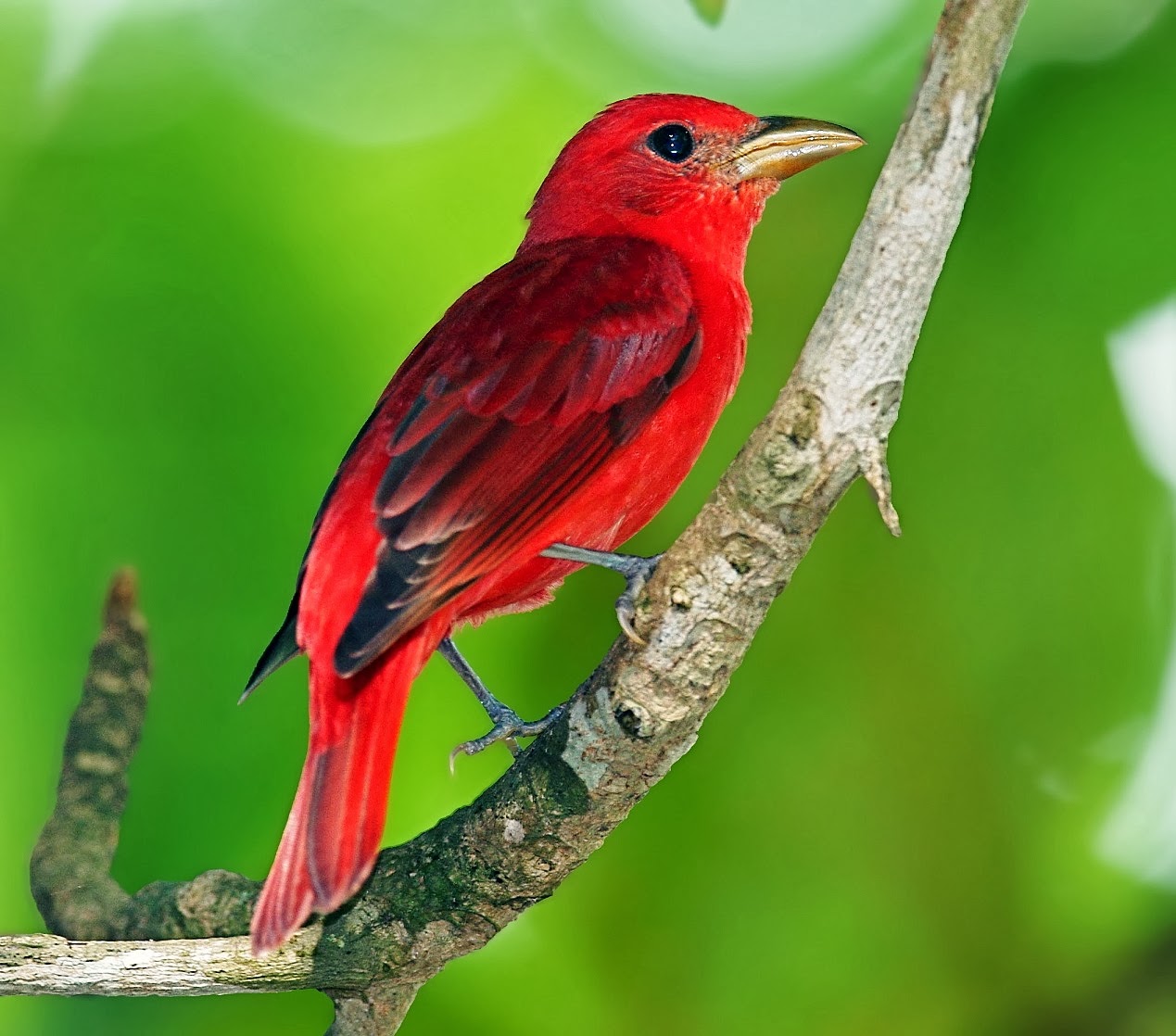 |
| Photo by Michel Giraud-Audine (GEPOG) |
Common name:
summer tanager (en); sanhaçu-vermelho (pt); piranga vermillon (fr); piranga roja (es); sommertangare (de)
Taxonomy:
Order Passeriformes
Family Thraupidae
Range:
This species breeds in the southern United States and northern Mexico and migrates south to winter in Central America, the Caribbean and in South America as far south as northern Brazil, Peru and Bolivia.
Size:
These birds are 17-19 cm long and weigh 25-30 g.
Habitat:
The summer tanager breeds mainly in open deciduous or pine-oak forests, particularly along the forests edge and in forests clearings, but also in high-altitude mesquite vegetations. Outside the breeding season they use both moist and dry tropical forests, rural gardens, plantations and parks within urban areas.
Diet:
They are specialized on hunting bees and wasps, but also take other aerial and terrestrial invertebrates such as spiders, cicadas, beetles, ants, termites, grasshoppers, flies, moths, and bugs, as well as fruits such as mulberries, blackberries, pokeweed, Cecropia, citrus, and bananas.
Breeding:
Summer tanagers are monogamous, but pair bonds only last one breeding season. They breed in April-August. The female builds the nest alone, which consists of an open cup made of dried vegetation and lined with fine grasses. It is usually placed on an horizontal branch, 2,5-10,5 m above the ground. The female lays 3-4 pale blue or pale green eggs with reddish-brown spots, which she incubates alone for 11-13 days. The chicks are fed by both parents and fledge 8-12 days after hatching.
Conservation:
IUCN status – LC (Least Concern)
This species has a very large breeding range and a global population estimated at 2,2 million individuals. The population has had a stable trend over the last 4 decades.







